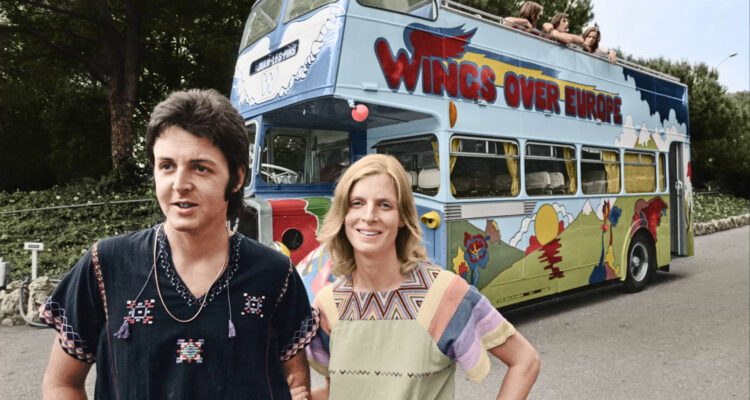Four Phenomenal Failures
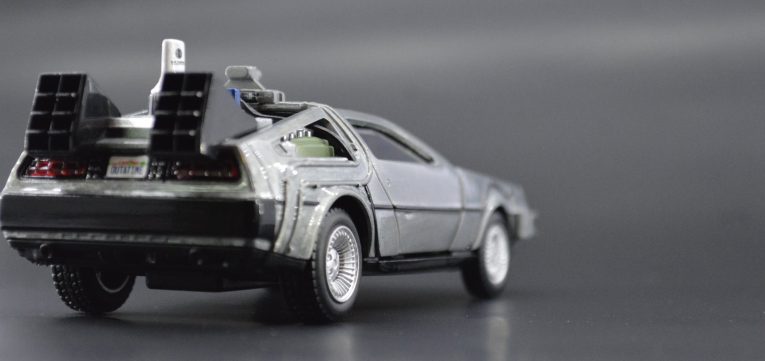
Designing and then producing a car is no simple thing, as well we all know. There is testing, there is market research, there is product development, the list goes on. And that vast list of requirements is there, largely, to stop unworthy cars, or cars that fail, from making it into showrooms. It’s a process that is there to spare the manufacturer its blushes, and that is there to ultimately spare the consumer from what may well have been an awful car. That’s why, by and large, cars are reasonably decent.
However, there is also a phenomenon within the design process that we’ll call the design bubble. In this bubble, the designers, the engineers and the company’s bosses become so focused on a goal, that they completely miss the potential negatives. Sometimes, as history tells us, it goes even further than that, and cars that are outright wrong end up making it to production.
And that’s what we have here. Four cars that were spectacular failures. But not in the cliched sense of ‘nobody bought them’ as per other lists of this ilk on the internet. No, these cars had potential, some were even revolutionary. But because of that bubble, and because so many elements of the design and engineering process were ignored or missed, these cars were always destined to fail.
Chevrolet Corvair
We’ll start with an interesting one, namely the Chevrolet Corvair. The Corvair (a portmanteau of Corvette and Bel Air) was a revolutionary car for General Motors. Introduced in 1960, the Corvair was a medium-size sedan, coupe, station wagon or convertible (as well as a number of commercial body types) and featured a rear-mounted, air-cooled, flat-six engine. This was a staggering layout for an American car. But Chevrolet bosses had high hopes, as this revolutionary design meant more cabin space and more load space. On paper, it was the perfect family car.
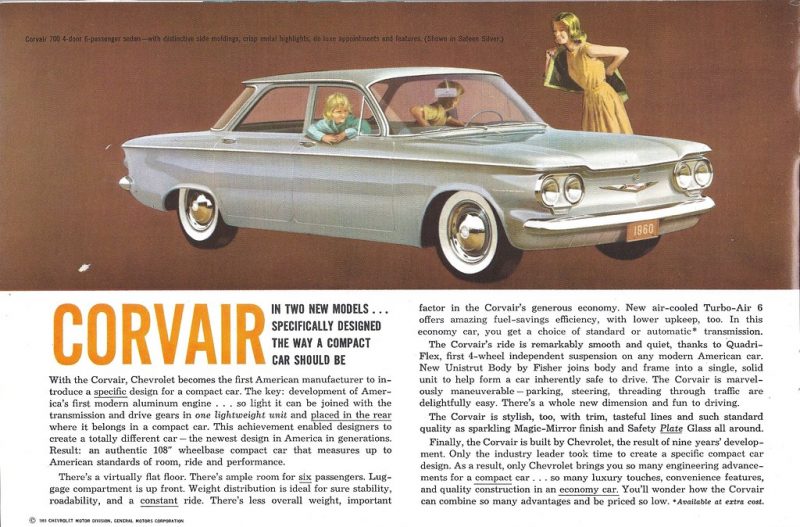
However, questions were raised of the way the car handled. The rear swing axle suspension design was criticised for being too unpredictable and prone to oversteer. GM of course denied this. Engineers, meanwhile, were advocates for an anti-roll bar, but instead bosses opted to simply underinflate the front tyres and over-inflate the rear to ‘cure’ the problem, as doing so cost nothing. However, owners could easily and unknowingly undo this ‘fix’.
The car went on to become one of the main talking points of Ralph Nader’s book on vehicle safety, Unsafe at Any Speed, in which he pulled no punches about the Corvair’s handling and potential danger. Nader, a popular political figure, didn’t even drive, but his words were enough to crush sales of the Corvair. And in reading this, you’ll be thinking that the Corvair ‘failed’ because of Nader. And yes, that is true. However, it was GM’s unwillingness to address issues that did it. They were too enclosed in their bubble.
In 1972, an independent body tested the car and found out it was no more dangerous than others with a similar suspension and engine setup. By the time GM did evolve the car to make it better. It was too little, too late. And the shadow cast over the Corvair was too great to escape.
DeLorean DMC-12
Ahh, the DeLorean DMC-12. A car that many think of as being successful because it was the star of one of Hollywood’s most successful franchises – Back to the Future. But that really wasn’t the case. The car ended up in the film because it was an unwanted thing that production could get hold of in multiple numbers for not a lot of money. Plus, its stainless steel body was suitably sci-fi.
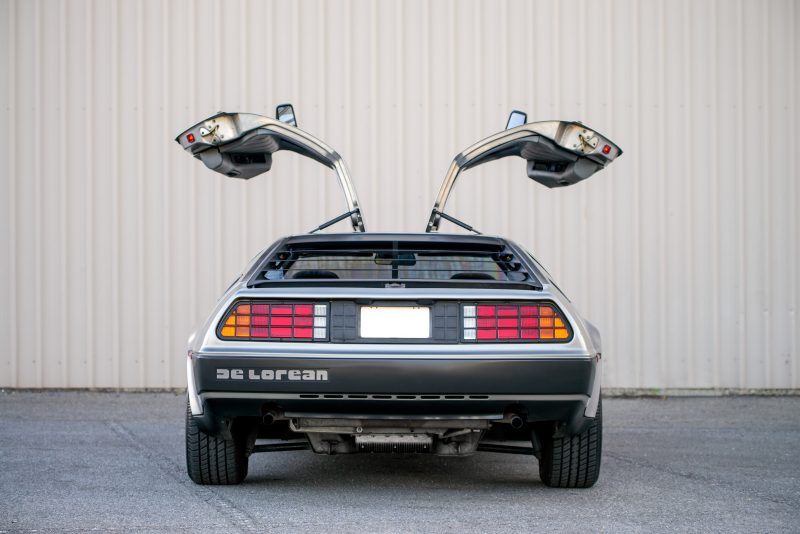
When it comes to automotive passion projects, few can match the scale of the DeLorean motor company. Founder, John DeLorean, was a charming, charismatic man who seemed to have it all. He rapidly worked his way through the ranks, from factory floor right up to being the youngest division head at GM – a position he earned at just 40 years of age. John was a dreamer, a man of bold and wild ideas, but unlike other dreamers, John could back it up with substance. He’s credited with being the father of the muscle car, after introducing the Pontiac GTO. He’s credited with saving the Camaro, after famously shutting down production to ensure it was perfect first. John was a doer, and John wanted his own car company.
On the 24th October, John got his car company, the freshly minted Delorean Motor Company. And straight off the bat, the car was wild. The DMC 12 was a low, sleek two-seater sports car with a midship engine, rear wheel drive, handling by Lotus, gull-wing doors and of course, the whole thing was made from stainless steel. It looked like something from 2021, not 1981 (the year it finally reached production). Sadly though, the car was hopeless.
First, there was the build quality. The new factory, which was built in Ireland, was staffed by willing and motivated people, but fundamentally people without skills. As such, the first cars were woeful. Then there was the engine, which was slow, the brakes useless and the steering vague at best. It should have been low (as per the film, actually) but the suspension had to be raised so the headlights were compliant with US regs. The changes made the DeLorean wallow all over the shop.
John fought hard for his car and his company. He even went against his better judgement and got himself caught up in a 24 million dollar drug deal/sting operation. However, judges ruled it was clear entrapment, and the case was dropped. It didn’t matter though, the damage was done. The quality was poor, the price was too high and the debts ($120million to the UK Government alone) were mounting. Had the car been better, and not the product of endless optimism and far-fetched ideas, the story of DeLorean may have been a different one.
Alfa Romeo Arna
When, on the 9th of October, 1980, Takashi Ishihara of Nissan and Ettore Massacesi of Alfa Romeo shook hands, the motoring crowds went wild. Nissan and Alfa Romeo coming together would be a key moment in automotive history. The new partnership would see the Japanese and the Italians come together to create a car to battle it out in the hatchback sector. Oh it had such promise. Italian style, but with Japanese reliability. How could this ever fail?
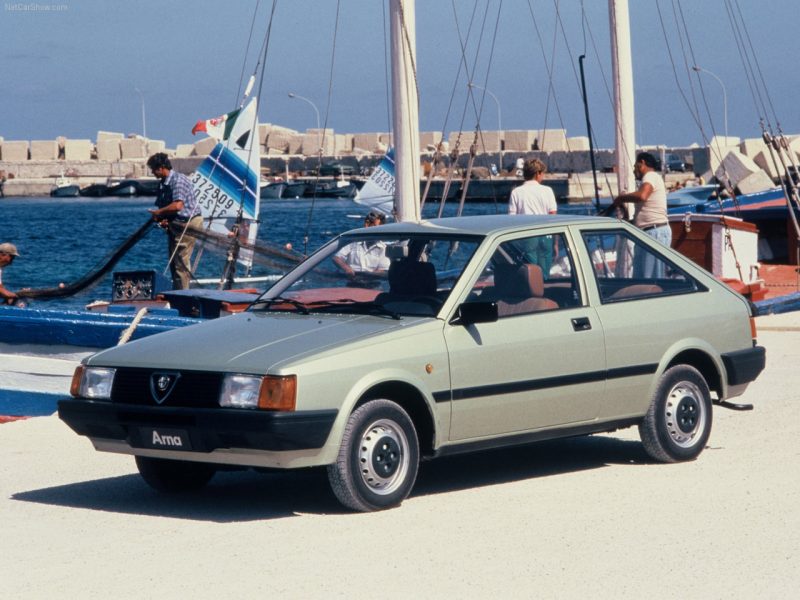
Well, it did fail. And in a big way. Nissan and Alfa Romeo were indeed coming together to build a car. A Japanese design with Italian mechanicals. The motoring crowds went… mild. Takashi and Ettore had done it the wrong way round. They put an Alfa Romeo flat-four engine in a Datsun Cherry. Good grief.
It was a woeful car. The front end mechanicals were all Alfa. So that meant brakes, steering and suspension. The engine, which had 95hp in 1.5 guise was slow and noisy, and that was the biggest engine. The Arna was available with a 1.4 and even a 1.2 version – 71 and 63hp respectively, in case you’re wondering. The handling was terrible, dull and NOT befitting of a car with an Alfa Romeo badge. As for the looks, well, it was functional, but that’s about all you can say.
But surely it was built to a high standard, what with the Nissan link? No, actually. It was built by the Italians, who were clearly unhappy with the pairing, as the Arna soon earned a reputation for being built with little care or attention to detail. Those that did rattle out of the factory would go on to almost immediately dissolve. But really, it’s no great loss.
Morgan Plus 4 Plus
No, that’s not a typo. There was indeed a car built by Morgan named the +4+. It was not a wheeled junior school maths problem. It was in fact a small, and rather nifty little fixed-head coupe. It was also a bold and daring departure for Morgan, a company so traditional it makes cask ale look like Red Bull.
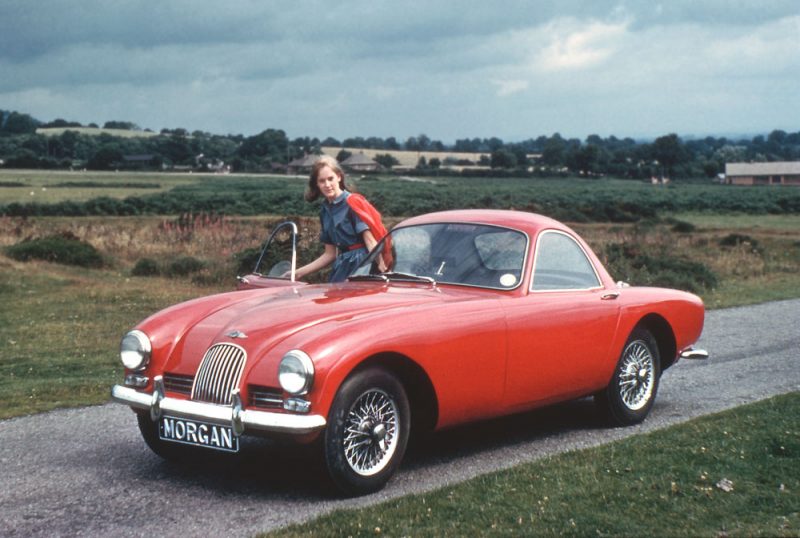
The thing is, though, Morgan has always been an evolving company. The +4+ is an example of that. And it’s also an example of how the company had to learn how to evolve. The recipe used today is to advance what’s under the car; the engine, the suspension and most recently, the chassis. Morgan now knows that the underside is the only place where it should make evolutionary changes. You have to leave the top, and the bit that people called Gerrald sit in, largely the same as it was in 1938.
The +4+ did it the other way around. It was largely a +4 underneath, but the fibreglass body that sat atop it was completely new. Morgan thought this was what the people wanted. A fixed-head car would expand the range, it would give buyers a new Morgan experience. Except it didn’t, because nobody bought it. In fact, just 26 were built. If you want to see one in the fibreglass, there is a beautiful maroon example at the factory.
The other thing was the way the +4+ drove. In a +4 you have the wind and bug and leaves slapping you in the face as a distraction. In the fixed-head car, you were left to feel every bump from the unforgiving suspension, and listen to the Triumph engine howl. It took the ‘experience’ out of driving a Morgan. We’ve driven one, and while it is a novel experience, we’re not in a rush to repeat it. Lesson learned, Morgan pretended it never happened and went back to making cars out of tin and twigs.

